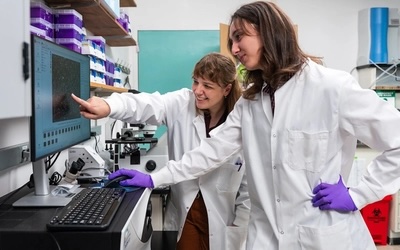
Michigan State University scientists have pinpointed the molecular “switch” that supercharges sperm for their final sprint to an egg — a breakthrough that could reshape infertility treatments and pave the way for safe, nonhormonal male contraceptives.
“Sperm metabolism is special since it’s only focused on generating more energy to achieve a single goal: fertilization,” said Melanie Balbach, an assistant professor in the Department of Biochemistry and Molecular Biology and senior author of the paper.
Before ejaculation, mammalian sperm rest in a low-energy state. Afterward, as they swim through the female reproductive tract, they undergo a series of changes that ultimately help them reach and fertilize an egg. These include swimming with quick, vigorous movements, as well as a change to the membranes that will encounter an egg.
“Many types of cells undergo this rapid switch from low to high energy states, and sperm are an ideal way to study such metabolic reprogramming,” said Balbach, who, in 2023, brought her pioneering science on sperm metabolism to MSU.
